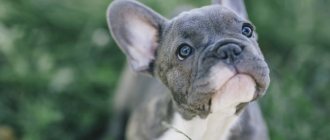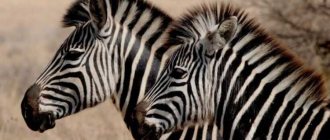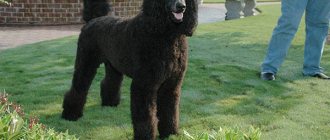Origin of the species and description
Photo: Swallowtail Butterfly
The species Papilio machaon belongs to the family of sailboats (Latin: Papilionidae). The species was discovered by the Swedish naturalist in 1758, Karl Lyney. The biologist named the butterfly in honor of the ancient Greek physician Machaon, who was a physician, surgeon and fought for the Greeks in the Trojan War (1194 BC). The doctor was the son of Asclepius (god of healing) and Epione.
Interesting fact: There is a legend that Doctor Machaon healed warriors wounded in battle. He took part in the Battle of Troy to win the hand and heart of Helen the Beautiful. But when he dies in one of the battles, his soul turns into a beautiful yellow butterfly with a black pattern on its wings.
Since the swallowtail's range is quite wide, up to 37 subspecies of the moth are distinguished. The most common among them:
- Orientis - south of Siberia;
- Ussuriensis - Amur and Primorye;
- Hippocrates - Japan, Sakhalin, Kuril Islands;
- Amurensis - basin of the middle and lower Amur;
- Asiatica - Central Yakutia;
- Kamtschadalus - Kamchatka;
- Gorganus - Central Europe, Caucasus;
- Aliaska - North America;
- Brutannicus Seitz - Great Britain;
- Centralis - Caucasian coast of the Caspian Sea, Northern Caspian Sea, Kura Valley;
- Muetingi - Elbrus;
- Syriacus - Syria.
There are other subspecies, but scientists do not recognize many of them, considering them only seasonal forms similar to the nominate individuals. The dependence of the color of wings on temperature does not allow taxonomists to come to a common opinion, as a result of which there is constant debate on this topic. Externally, the appearance is similar to the Corsican sailboat and the Alexanor sailboat.
Swallowtails (Papilionidae)
Russia
Butterflies of the Swallowtail family
Swallowtails (Papilionidae).
In the figure: 1 - Podalirius butterfly (Papilio podalirius), 1a - caterpillar, 1b - pupa, 1c - imago. 2 - Butterfly Alexanor (Papilio alexanor). 3 – Corsican swallowtail (Papilio hospiton). 4 - Swallowtail butterfly (Papilio machaon), 4a - caterpillar, 4b - pupa, 4c - imago. 5 - Caucasian zerinthia butterfly (Thais cerisyi). 6 - Polyxene swallowtail (Papilio polyxenes) or Zerynthia polyxena 7 - Zerynthia rumina butterfly (Zerynthia rumina). 8 — Archon butterfly (Archon apollinus), female. Sailboat Machaon
(Common swallowtail, Papilio machaon) is a diurnal butterfly from the family of swallowtails or cavaliers (Papilionidae).
Machaon was named by
the Swedish naturalist Carl
Linnaeus
in honor of the famous
physician
Machaon (ancient Greek mythology), the son of Asclepius and Epione, who took part in the Greek campaign against Troy during the Trojan War (1194-1184 BC).
The wingspan of males is 64-81 mm, females - 74-95 mm. The hind wings have “ tails
” up to 10 mm.
Common swallowtail (Papilio machaon)
Common swallowtail (Papilio machaon).
Swallowtail caterpillar
Swallowtail caterpillar.
Metamorphosis of the swallowtail butterfly
Transformation of a caterpillar into a pupa (stage of complete metamorphosis of the swallowtail butterfly)
Area
Swallowtail is found in Asia (including the tropics), North Africa and North America. In the mountains of Europe it rises to a height of 2000 m above sea level (Alps), in Asia - up to 4500 m (Tibet). Swallowtail
listed in the Red Books of Ukraine (1994), in Russia - in the Red Book of the Moscow Region (1998), Smolensk Region, Vologda Region (2006), Latvia (1998, Lithuania, Germany, Karelia.
Maak's swallowtail (male)
Maack's swallowtail or Maack's tailtail (Papilio maackii). Primorsky Krai.
Maak's swallowtail (female)
Maack's swallowtail (female) (Papilio maackii). Primorsky Krai.
Sailboat Maaka is the largest in Russia
The specific name is given in honor of Richard Karlovich Maack
-
Russian
naturalist, researcher of Siberia and the Far East. The female is larger than the male, her wingspan is up to 135 mm, in the male - up to 125 mm. The Maaka sailboat is listed in the Red Book of the Sakhalin Region (2001). Protected on the territory of the Kurilsky Nature Reserve.
Sailboat Ulysses
(Papilio ulysses) is a diurnal butterfly of the family Papilionidae. Wingspan up to 140 mm. The main background of the wings is black, in the male with large margins, the color of which varies among different subspecies from bright blue to blue and dark blue.
Australia.
Sailboat Ulysses (Papilio ulysses). Reverse side of the wings.
Sailboat Ulysses (Papilio ulysses). The upper and lower sides of the wings. Range of the Swallowtail Podalirium
The species is named after Podalirius, in ancient Greek mythology, a famous physician, the son of Asclepius (god of medicine and healing) and Epione (goddess of pain relief). Wingspan 68-72 mm; females are larger than males. The main color background of the wings is light yellow, the front pair has a black pattern of 7 vertical wedge-shaped stripes, the rear pair has a black-blue border. Hind wings with tails up to 15 mm long, at their base there is an ocellar spot.
Podalirius swallowtail (Papilio podalirius)
Podalirius swallowtail (Papilio podalirius).
Area of Russia
The sailboat Podalirium was included in the Red Book of the USSR (1984) as a species declining in numbers. Currently included in the Red Book of Ukraine (2009), category 2; in the Red Book of the Moscow Region (1998), category 1, Smolensk Region (1997), category 2, Vologda Region (2006), category 4.
Appearance and features
Photo: Machaon
The color of the swallowtail is bright and beautiful - yellow or beige. On top of it is a pattern of black lines. Body size reaches 10 centimeters in females and 8 in males. The wingspan is from 6 to 10 centimeters, depending on the subspecies. Along the outer edges of the wings there is a pattern of moon-shaped yellow spots.
The hind wings have elongated tails that are not adjacent to the abdomen. Their length can reach up to 10 millimeters. The sides of the wings are framed by blue and yellow spots. There is a red “eye” on the inside of the wings. Life expectancy is up to 24 days.
Video: Swallowtail Butterfly
The caterpillars hatch green with black stripes containing many red dots. Their body length at birth is about 2 millimeters. In the prothoracic segment there is a fork-shaped gland that forms orange “horns”.
Interesting fact: “Horns” serve as protection against natural enemies. The gland emits an unpleasant odor that repels predators. Caterpillars lie curled up in a ball most of the day. They disguise themselves as bird droppings so as not to attract the attention of birds.
Pupae can be gray or green. The last generation always overwinters in the pupal stage. The adult is born in the spring, when all the frosts have passed. For the first half hour, they dry the wings and thaw, and then scatter throughout the area.
So we figured out what the Swallowtail butterfly looks like. Now let's find out where the Swallowtail butterfly lives.
Morphological description
Swallowtail swallowtail (Papiliomachaon) is one of the most common representatives of its family. Carl Linnaeus named the species after the mythical Greek physician Machaon, who participated in the campaign against Troy. The size of the wings of the male is 65-80 mm, of the female - 75-95 mm. The main background of the wings is yellow. In the middle of the forewing there is a pattern of black stripes and spots, the base is darkened. Along the edge there is a wide black border with yellow hemispheres. The main part of the hind wings is yellow; closer to the edge there is a blue band with a black border. The outer edge has a red eye with a black outline. The photo shows that the edge of the hind wings of the swallowtail butterfly is wavy, the tails reach a length of 10 mm.
Information. Papiliomachaon of the first generation are light in color, representatives of the second generation are noticeably larger, their colors are richer and brighter.
The body of the moth is light-colored and covered with sandy hairs. There are longitudinal black stripes on the chest and abdomen. The head is round and inactive. On the sides are complex compound eyes. The organ of vision helps insects navigate in space, distinguish objects and some colors. In the frontal part there are long, segmented antennae ending in a club. Mouthparts are sucking type. This is a long black proboscis that allows it to drink nectar from flowers. In a calm state, it is twisted into a spiral.
Where does the swallowtail butterfly live?
Photo: Swallowtail Butterfly
This species inhabits almost every corner of the Earth. Insects can be found in North America, southern India, North Africa, the islands of the Indian Ocean, throughout Asia; in England, moths live only in the lands of Norfolk County and in the territory extending from the Arctic Ocean to the Black Sea.
The Swallowtail butterfly can live in almost any conditions; any climate suits it. The butterfly was encountered in the mountains of Tibet at an altitude of 4500 meters above sea level. Such a wide geographical distribution has led to such a wide list of subspecies.
Insects love open spaces, so they prefer fields, forest edges, steppes, gardens, and tundras to polluted, noisy cities. Moths can fly at a height of 2.5 to 4 meters. They do not stay on one plant for a long time, so naturalists nicknamed them energetic butterflies.
In the north of their range, these beautiful creatures can be found in the summer; in the southern regions, the species is awake from May to September. Lepidoptera prefer not to migrate, but to stay in their native lands for the winter. Particularly large accumulations are observed on lands sown with carrots, caraway seeds, fennel, and dill.
The Orientis subspecies prefers the southern climate, Asiatica prefers the northern climate, Gorganus chose a moderately warm one. Brutannicus prefers humid environments, while Centralis and Rustaveli prefer mountainous areas. In general, the species chooses sunny areas with an abundance of flowers.
Notes
- Striganova B. R., Zakharov A. A.
Five-language dictionary of animal names: Insects (Latin-Russian-English-German-French) / . - M.: RUSSO, 2000. - P. 265. - 1060 copies. — ISBN 5-88721-162-8. - Korshunov Yu. P.
Keys to the flora and fauna of Russia // Mace Lepidoptera of Northern Asia. Issue 4. - M.: Partnership of Scientific Publications KMK, 2002. - P. 31. - ISBN 5-87317-115-7. - Reichholf-Rim H.
Butterflies. M.: Astrel, 2002. - M. Koch.
Wir bestimmen. - E. Hoffman, N. A. Kholodkovsky.
Butterflies of Europe. - Korshunov Yu. P.
Lepidoptera of Northern Asia. M.: KMK, 2002. - Mouha J.
Butterflies. Prague: Artia, 1979. - Day butterflies ( Hesperioidea
and
Papilionoidea, Lepidoptera
) of Eastern Europe. CD identifier, database and Lysandra software package. I. G. Plyushch, D. V. Morgun, K. E. Dovgailo, N. I. Rubin, I. A. Solodovnikov. Minsk, 2005. - Lampert K.
Atlas of butterflies and caterpillars. Mn.: Harvest, 2003.
What does the swallowtail butterfly eat?
Photo: Machaon
As soon as the caterpillar is born, the insect immediately begins to eat the leaves of the plant on which the egg was laid. The caterpillars feed very actively, making a significant reserve of energy precisely at this stage. Most often, umbrella species become food for species in the middle zone, such as:
- Parsley;
- Dill;
- Caraway;
- Carrots (wild or regular);
- Hogweed;
- Buten;
- Angelica;
- Prangos;
- Gorichnik;
- Fennel;
- Reznik;
- Celery;
- Bedrenets;
- Cutter;
- Girchovnitsa.
Inhabitants of other regions feed on plants of the Rutaceae family - hairy ash, Amur velvet, various types of whole leaf; Compositae: wormwood; birch: Maksimovich alder, Japanese alder. Towards the end of its development, the caterpillar's appetite decreases and it practically does not eat.
Adults feed on nectar, like most other butterflies, thanks to their long black proboscis. They are not as picky eaters as caterpillars, so they choose not only umbrella plants. To find food for themselves, moths visit different flowers.
Adults do not require a large amount of food; just a drop of flower nectar is enough for them, and they quench their thirst with morning dew. Lepidoptera obtain all the microelements necessary to maintain a tiny organism from soil containing salts or from the waste of other animals.
Nutrition
Diet may vary depending on habitat. For example, in Central Asia, the main food of Swallowtails is wormwood. In the middle zone, food consists of various umbrella crops, such as:
- Hogweed and carrots;
- Parsley, fennel, dill;
- Gorinik, prangos;
- Gircha and the cutter.
Swallowtails also like to feed on various rue and birch shoots. Adult Swallowtails prefer flower nectar.
Features of character and lifestyle
Photo: Swallowtail butterfly from the Red Book
Butterfly activity occurs during the daytime. They also pollinate flowers that bloom only during the day. Adults live only a few weeks and, after fertilization (males) and laying eggs (females), the moths die. The summer period lasts from May to June and July-August; the southern subspecies can be found in September.
Swallowtails are very active creatures. Even when feeding with nectar, they do not fold their wings in order to fly further at any second. Individuals prone to migration fly into cities and settle in park areas, garden plots, and lawns rich in flower plants.
To find the most comfortable living conditions and places with a good food supply, moths are ready to travel vast distances. Most individuals produce two generations in a lifetime, in the north of the range - one, in the south - up to three. Adults are preoccupied with breeding offspring and try to find a partner as quickly as possible.
Interesting fact: The caterpillars of this species have impressive mouthparts. They begin to eat the leaf from the edges. Having reached the central vein, they move to the next one. They gain weight very quickly. But as soon as the individual pupates, growth is completed. Moths only need energy to fly and reproduce.
Keeping at home
Let us dwell in more detail on the description of the procedure for breeding the swallowtail butterfly at home.
In order for such a beauty to take root and reproduce in your home, you will need:
- an aquarium or terrarium, at the rate of 10 liters of volume for every 5 caterpillars;
- a small container of water where dill will be placed for feeding the caterpillars;
- branch for caterpillar pupation.
The bottom of the aquarium - or rather, now it would be more correct to call it an insectarium - should be lined with a layer of thick paper, its function is to absorb excess moisture. Humidity, in general, is one of the key points in the maintenance and breeding of caterpillars, and subsequently swallowtail butterflies. You can find a lot of conflicting information about how you should regulate humidity, or whether you should do it at all. In our case, the normal level is maintained by an open container of water containing dill.
You should also put several branches in the insectarium, preferably with shoots sticking out in different directions. The branch should lie on the surface, and the shoots should rise above the surface, in different directions. Such branches will be needed for caterpillar pupation.
Video
Social structure and reproduction
Photo: Swallowtail Butterfly Caterpillar
Since nature has given swallowtails very little time to exist, only newly born butterflies immediately begin searching for a partner. Pairs find each other thanks to the production of a pheromone, which they release into the environment.
During her short life, the female manages to lay 100-200 eggs. With each approach, she lays 2-3 spherical, light yellow eggs under the leaves or on the stems of plants. After about a week, the eggs darken and change their color to black.
Females deliberately lay one egg on different plant leaves to provide food for the newborn caterpillars. After 8-10 days, the larvae hatch and first begin to eat. At the age of about 7 weeks, the caterpillar is attached with a silk thread to the stem of the plant, the last moult occurs and the individual pupates.
The pupae remain motionless for 2-3 weeks, after which they turn into an adult butterfly. In the cocoon, most of the caterpillar's organs are destroyed, transforming into the organs of an adult. The process is reminiscent of digesting your own body in a cocoon.
Summer pupae are predominantly green, wintering ones are brown. The butterfly will remain in the pupal stage until the first warm days. When the cocoon cracks, a beautiful creature is born. The moth sits in the sun for some time and dries its spread wings, after which it goes in search of food and a partner.
Habitats and lifestyle
In describing the lifestyle of the swallowtail butterfly, a significant role is given to two points: nutrition and reproduction. In the short time allotted to the imago, they must gain strength for mating and continue the race. Favorite habitats: steppes with various herbs, well-warmed forest glades and edges, roadsides and river banks. In the northern regions it is found in the tundra. Some individuals fly into cities. In the mountainous regions of the Alps they fly to a height of 2000 m. Adults are prone to migration, flying considerable distances in search of comfortable living conditions and food plants.
Butterflies fly in temperate climates from May to August, in the south - from March to November. The bulk of insects give two generations, in the north one, in North Africa - three.
Reproduction
The fertilized female lays single eggs on food plants. In the middle zone these are umbelliferous: dill, parsley, angelica, mustard plaster, celery and cumin. In other regions, rutaceae, birch, and asteraceae plants are found. The laying is carried out on the lower part of the leaf or stem, while the butterfly hangs in the air. The female's fertility is 100-120 eggs. They are initially green in color, then become yellow-brown.
A week later, a caterpillar 3 mm long appears. In warm weather it feeds a lot and grows quickly. Prefers to eat ovaries and flowers, less often leaves. The caterpillar changes through 5 instars. The adult larva grows up to 50 mm. The development period depends on weather conditions, in favorable circumstances it is 15-18 days. Before pupation, the caterpillar stops feeding and looks for a suitable place.
For pupation, the stem of a food plant or a nearby bush is selected. The insect is attached to the branch with a silky belt. Summer pupae of the first generation are green. After 2-3 weeks, the imago emerges from them. Overwintering pupae are brown; this stage lasts throughout the entire cold period.
Nutrition
Sailboats fly actively in warm sunny weather. Adults need additional nutrition on flowers and replenishment of microelements. Male swallowtails often gather in groups of 10-15 individuals on the wet banks of water bodies and sit on excrement and dung. What does the swallowtail butterfly eat? The main feeding occurs on the flowers of herbaceous plants:
- carrot;
- snakehead;
- oregano;
- honeysuckle;
- rose hip;
- geranium.
Having fulfilled its intended reproductive function, the insect dies. How long does a swallowtail butterfly live? The lifespan of the imago is 3 weeks.
Natural enemies of the swallowtail butterfly
Photo: Swallowtail Butterfly
At all stages of the insect's life cycle there is danger. The Swallowtail butterfly can become food for arachnids, birds, ants, insectivores, and small mammals. Moths are most vulnerable in the caterpillar or pupa stage. The insect manages to avoid attacks thanks to its camouflage color.
When young, the caterpillar looks like bird droppings. After the next molt, black and bright orange spots appear on the body. The colorful appearance lets predators know that the insects are not suitable for consumption. If the caterpillar senses danger, it begins to emit an unpleasant putrid smell with its horns, indicating that its taste is disgusting.
On the hind wings there are red-blue spots with a black border, resembling eyes in appearance. When the wings are spread, these spectacled spots discourage predators who want to feast on the moth. The effect is secured by elongated processes at the tips of the wings, reminiscent of tails.
Seventy years ago, moths were considered pests due to their consumption of human-grown plants. People destroyed butterflies in every possible way, treating fields with poisons and chemicals. Because of this, the number of the species quickly decreased and meeting this fluttering creature became a problematic task.
Related species
The Maak's swallowtail or blue swallowtail butterfly also belongs to the genus Papilio. The insect is named after R. K. Maak, a researcher of Siberia and the Far East. The wingspan of the largest butterfly in Russia is 125-135 mm. The color of the forewings of males has a green tint and black stripes. The hind wings are dark blue with blue spots. Females are brown or black in color; the hind wings have a pattern of red spots at the outer edge.
The Maaka tail-bearer lives in Primorye, Transbaikalia, Sakhalin, Korea, Japan and China. The insect lives in deciduous and mixed forests. Caterpillars feed on trees from the rue family - Amur velvet, Sakhalin velvet. The blue swallowtail is listed in the Red Book of the Sakhalin Region.
Population and species status
Photo: Machaon
The number of swallowtails is small and is directly related to the destruction of their natural habitats. On the territory of Russia, populations are considered small. Subspecies living in areas running along railroad tracks and reclamation canals are exposed to poisoning by pesticides.
The greatest damage is caused by the burning of autumn grass, which has become catastrophic on a massive scale. When grass is burned in the spring, a huge number of pupae that overwinter on plant stems are destroyed. Summer mowing of grass along highways also causes significant damage in terms of numbers.
Some of the blame falls on collectors who want to get as many rare endangered species into their collections as possible. They catch individuals either for personal sets, or for exchange with other butterfly lovers from different countries. But no one collects statistics, as well as data on the amount of damage.
Natural problems include cold weather conditions, low temperatures, early frosts, due to which the individual does not have time to pupate, and prolonged autumn, which leads to damage to the larvae by fungus and parasites. Declines in numbers are observed throughout Europe. In some countries the species is protected.
What does the butterfly that bears the name of the legendary doctor look like?
The size of this insect is quite decent among its relatives. The body length of the swallowtail is about 7 – 9 centimeters. The fragile wings of the swallowtail butterfly amaze with their beauty and variety of colors: the background is usually bright yellow, and there are black, white, red, and blue patterns on it. What lines and shapes you won’t see here! Wavy, rounded shapes - all this beauty fits most skillfully on two pairs of small swallowtail wings.
Butterflies that appear in spring have a brighter color than summer representatives of this species.
Grown-up swallowtail caterpillar
Subspecies
The wide distribution area of swallowtails has led to the formation of various subspecies, differing in color and size.
- P. m. bairdii is a black swallowtail butterfly native to North America. The dark shape is similar to the polyxene swallowtail. The main color is black. On the front wings there is a pattern of yellow strokes and spots located on a black border. On the hind wings, in addition to yellow and blue spots near the tails, there is an orange eye.
- P. m. ussuriensis - lives in Primorye and the Amur region, the group is characterized by large insect sizes. Females have a wingspan of 95 mm, and males have a wingspan of 85 mm. Insects are distinguished by their rich black and blue colors.
- P. m. hippocrates - a subspecies has settled in Japan and nearby islands, in which a blue stripe above a red eye is enclosed between two black ones.
- P. m. kamtschadalus are unique butterflies of bright yellow color with a faded black pattern and shortened tails. The endemic subspecies lives on the Kamchatka Peninsula.
- P. m. gorganus - continental subspecies is widespread on the plains of Russia, in the foothills of the Caucasus and Central Europe. What does the swallowtail butterfly, found in most European countries, look like? The wingspan does not exceed 60-70 mm, their tails are 6-7 mm long. The background of the wings is light yellow with a distinct black pattern and blue spots.
Limiting factors and protection
The number of swallowtail butterflies in Russia ranges from low to normal in different regions. The species is under threat in several regions: Smolensk, Moscow, Vologda. In these regions, as well as on Sakhalin, the swallowtail butterfly is listed in the Red Book. Negative factors affecting the number of butterflies are natural and economic. Natural problems:
- Low temperature, lack of sun during mating and ovipositor periods.
- Damage to larvae by fungus and parasites in a rainy, prolonged autumn.
- Early frosts, due to which the caterpillar does not have time to turn into a pupa and dies.
We suggest you read: Small white insects in the apartment and bathroom - photo, description, how to get rid
Anthropogenic factors:
- Forest fires and fallen grass.
- Insecticidal treatment of agricultural fields.
- Destruction of caterpillars and catching butterflies for collection.
A decrease in the number of Papiliomachaon is observed not only in Russia, but in European countries. The species is under state protection in Latvia, Lithuania, and Germany. As a precautionary measure, collecting butterflies and caterpillars is prohibited. In their habitats, the use of chemicals and grazing are regulated.











